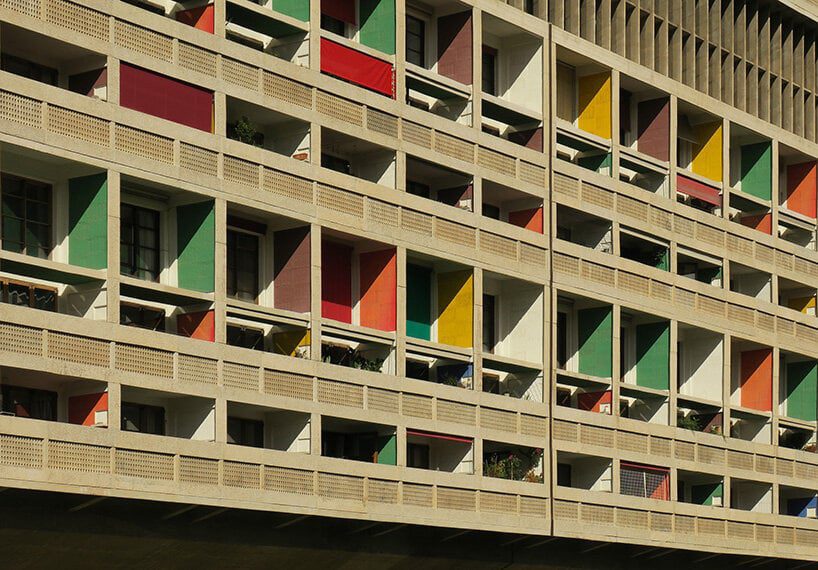unite d’habitation through the lens of paul clemence
Photographer Paul Clemence journeys to Marseille to discover Le Corbusier‘s Unite d’Habitation, one of the most recognizable works of modernism. Following his stay at the Hôtel le Corbusier, which occupies the third floor of the iconic building, the Brooklyn-based photographer offers new a glimpse inside the vertical city. The 1952-built project was first erected in response to the baby boom and subsequent housing crisis of post-war France, and takes shape as a monumental, seventeen-story block raised atop an array of heroic pilotis.
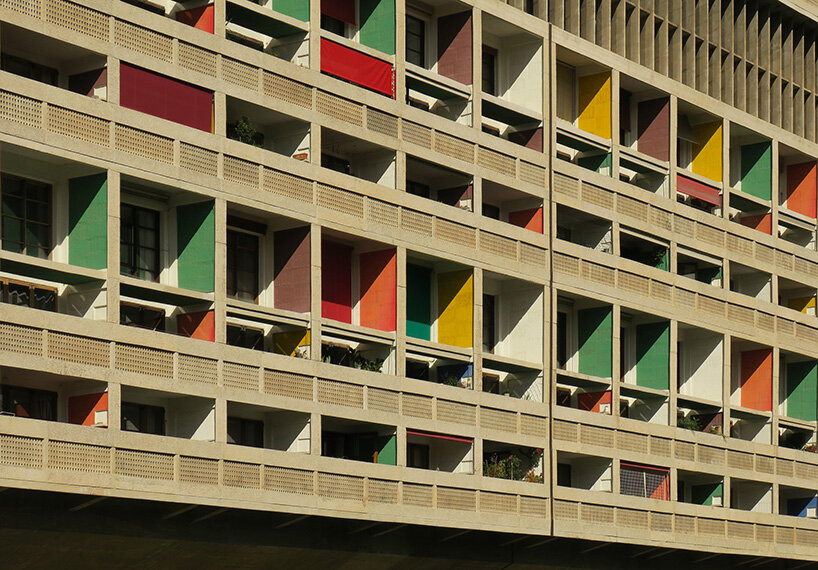
images © Paul Clemence / ARCHI-PHOTO | @photobyclemence
discover the concrete city in the sky
Unite d’Habitation exemplifies Le Corbusier’s call for a new modern architecture, and is brought to life with modernist innovations a range of scales. An early example of the brise-soleil shows thoughtful, environmentally-responsive detailing, which integrates a system of sun shading directly into the facade. Meanwhile, a modular logic ensures that each narrow unit spans two levels and receives sunlight and ventilation from either end — this concept of a simple component to be aggregated is typical of Le Corbusier’s new school of thought.
On the whole, the project is designed to function as a city, a ‘machine for living in,’ and integrates all necessary amenities for its occupants to live. When first conceived, Unite d’Habitation was tightly fit with 330 units for 1,600 people, a post office, a two-level shopping center, library, restaurant, hotel for visitors, clinic, and a rooftop gymnasium and track. Even a school was located on the eleven-acre grounds.
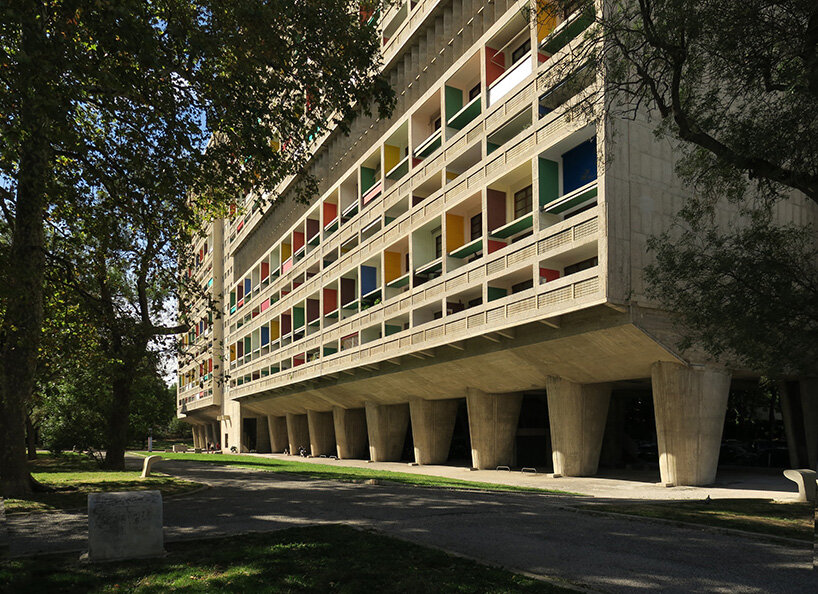
le corbusier’s mediterranean masterpiece
The design of Le Corbusier’s Unite d’Habitation takes vernacular cues from the Mediterranean context — the French architect was largely influenced by his early travels throughout Greece and Rome, and drew from its built landscape of ubiquitous white walls and roof gardens. More than historical styles, he applied the spatial ideas of the urban armature to his work. Thus, the project harmonizes the individual dwelling with the ‘urban plan.’
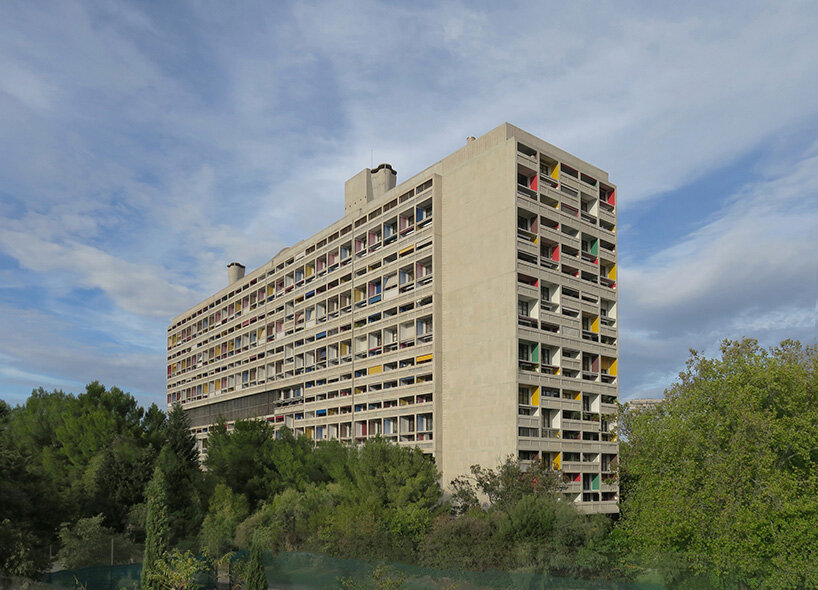
the monumental block rises seventeen stories, its modular logic expressed along its patterned facade
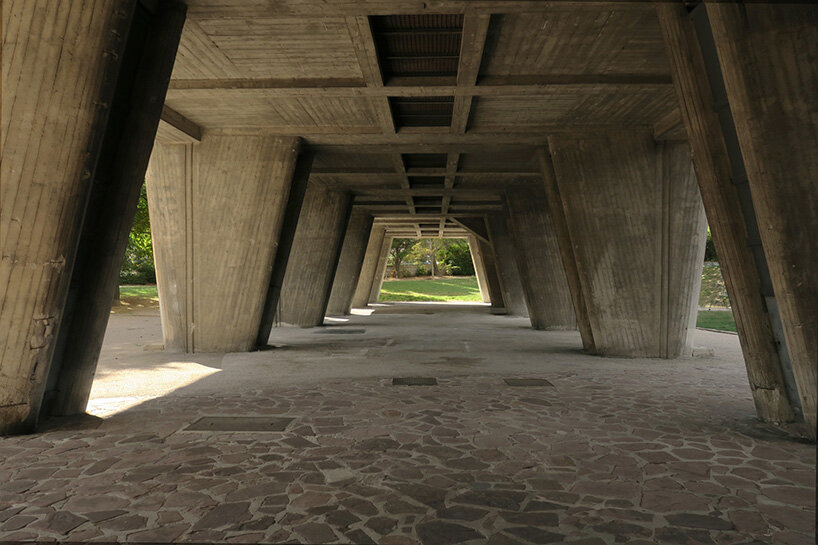
the building is elevated atop an array of heroic pilotis
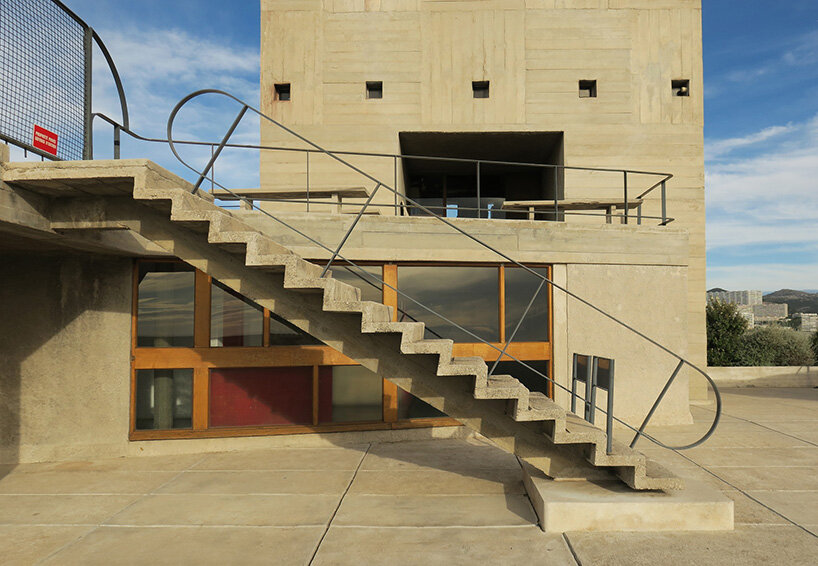 Ora Ito’s MAMO (Marseille Modulor) art space occupies the rooftop (see designboom’s coverage here)
Ora Ito’s MAMO (Marseille Modulor) art space occupies the rooftop (see designboom’s coverage here)

